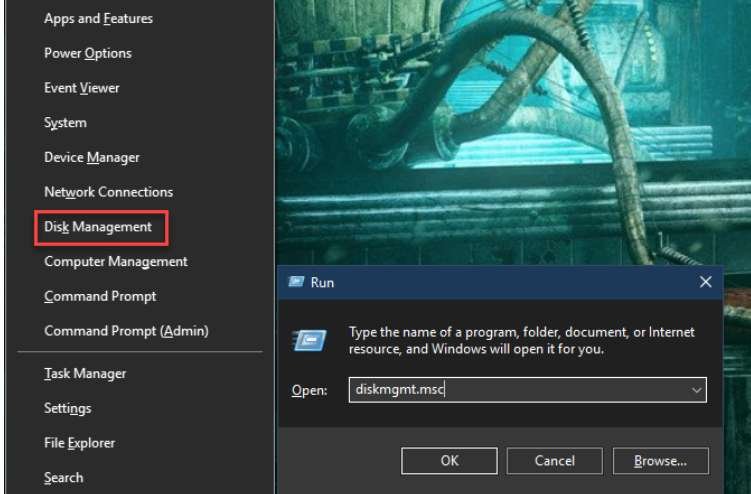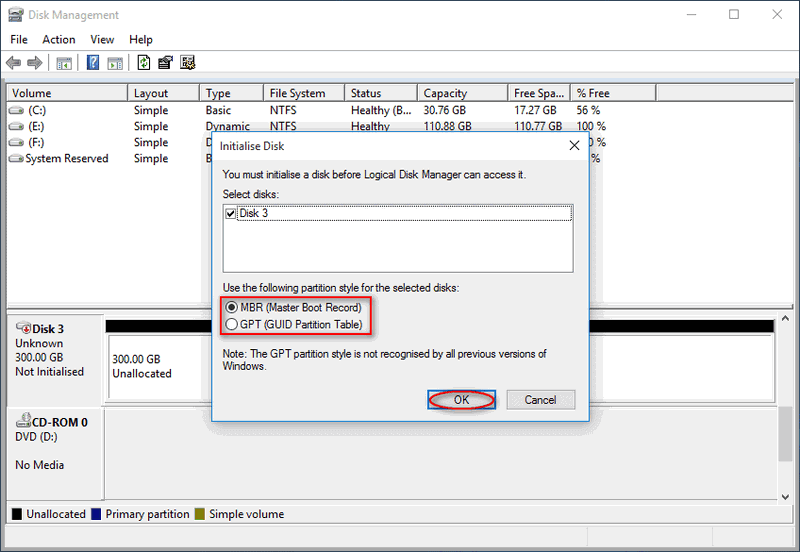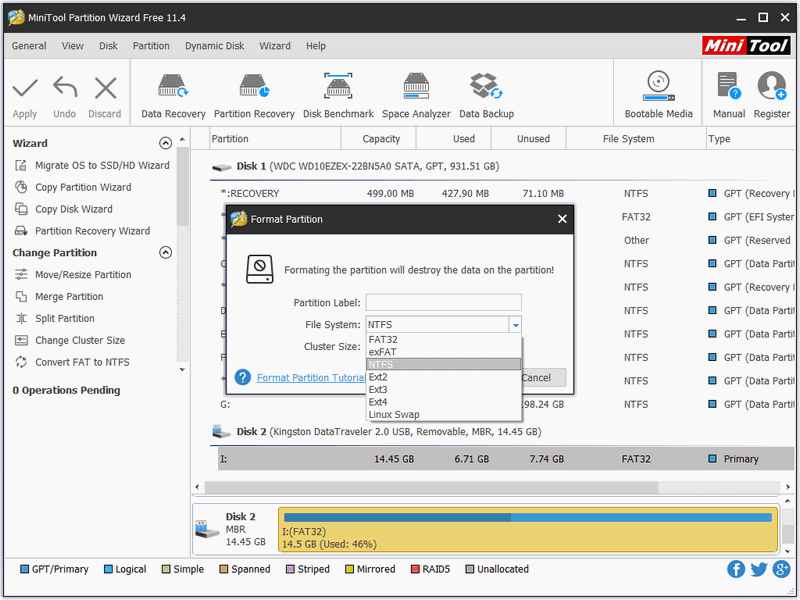After you connect your external hard drive to the computer, sometimes you’ll find that you cannot access the files. For example, the external hard drive is not showing up in Windows 10 File Explorer. The external hard drive is not showing up in Disk Management on Windows 10, or the external hard disk can be detected but is not opening. ( Related article: Solved – Files Not Showing in External Hard Drive )
The problem scenarios may be caused by many reasons – improper hardware connection, dead USB ports, the disk is raw, or it does not have a drive letter, outdated/corrupt driver, file system incompatibility, the external hard drive is unallocated, disk errors, serious physical damage, etc. When your external hard drive suddenly begins not showing up in the File Explorer or Disk Management, don’t panic. This guide will learn 8 solutions to get around the “hard drive not showing up in Windows 10” error.
#1. Check Your Hardware Connection
Checking the connection is a quick way to diagnose if the problem is with your PC or your hard drive. Plug the USB cable into another USB port, or connect your external drive to another PC to see if your computer can recognize it. If the external hard drive is still not showing up on another PC, the problem is likely to be related to your hard drive, try other methods below.
#2. Assign a Different Drive Letter for the Drive
If the external hard drive’s drive letter is missing or the drive letter is in conflict with another drive, it will not show on your computer. In Windows Disk Management, you can know if the drive is assigned a drive letter, and then you can assign a drive letter or manually change the drive letter for your device. More detailed guidance on how to use Disk Management on Windows 10 can be found here.

- Open Disk Management utility: press Windows Key + X and select Disk Management from the menu. ( See picture above, you can also open the Run dialog with Windows + R, and then enter diskmgmt.msc.)
- Now you can find all detected disks are listed in Disk Management. If you can see your external hard drive is listed there, but it has no drive letter, please right-click the drive and select Change Drive Letter and Paths.
3) At last, click the Add button, select a drive letter for it, or click the Change button to change a drive letter for the drive manually.
#3. Update or Reinstall the Device Driver
The driver issues are likely to result in the external hard drive not showing up Windows 10 error. You can take these steps to update or reinstall the device driver.
1) Open Device Manager menu in this way – Press Windows + X on your keyboard and select Device Manager.
2) Now expand Disk drives and check the status of the external hard drive. (The yellow or red mark next to the drive indicates there is a driver issue.)
3) Please right-click the external hard drive → click Update Driver, → then select “Search automatically for updated driver software” to install the latest driver. Alternatively, you could select Uninstall device to uninstall the driver, finally, restart your computer to reinstall the driver automatically.
# 4. Update the USB Mass Storage Device Driver
Use Windows Search to search for Device Manager and click the first result, expand Universal Serial Bus controllers, → right-click the USB Mass Storage Device → select Update driver and follow the on-screen introduction to update it or select Uninstall device to uninstall the USB mass storage device driver, at last, reboot your Windows computer.
# 5. Run Hardware and Devices Troubleshooter
By troubleshooting hardware and device issues, you can solve the External hard drive not detected/recognized Windows 10 issue.
Open Hardware and Devices troubleshooter window in this way – press Windows + R on the keyboard, type msdt.exe -id DeviceDiagnostic in Run dialog, and press Enter. In the window, please follow the instructions to find and fix problems with devices and hardware.
# 6. Create a New Partition on the Hard Drive
If your newly bought external hard drive and has no partition (or the drive is unallocated ), it won’t appear in Windows 10 File Explorer. To make the unallocated portion of a hard drive useful, you can follow the steps to create a new partition so that it can be recognized by your computer.

1) Press Windows + X keys and select Disk Management. If you can see the exact disk space, but the external hard drive shows unallocated or not initialized, please right-click the drive → select Initialize Disk, and then use MBR partition style (Master Boot Record) or GPT (GUID Partition Table) to initialize the disk.
2) When that is done, right-click the unallocated area and select “New Simple Volume.” In the New Simple Volume Wizard window, select a file system (such as NTFS) to create a new partition on your external hard drive.
# 7. Format the External Hard Drive to NTFS File System
The incompatible file system format is another reason to cause external hard drive is not showing up in Windows 10. If you do not think there are any important files on the drive, you can right-click the partition on the drive in Disk Management, then select “Format” to directly format the drive to NTFS. Be aware that this operation will cause data loss.
If you want to convert the hard drive to NTFS without losing any data, you can use the MiniTool Partition Wizard free edition to do so.

# 8. Run CHKDSK to Analyze and Repair Disk Errors
If the disk has logical errors or is corrupt, the external hard drive detected but not opening error will appear on Windows 10 computer. The good news is that the CHKDSK (Check Disk) feature on Windows can help you to check hard drive errors and run repairs automatically.
1) Press Windows key + R to open the Run dialog box, type cmd, and press Ctrl + Shift + Enter to run Command Prompt as administrator.
2) Then type chkdsk *: /f /r command, at last, press Enter to begin run CHKDSK to analyze and fix disk errors ( NOTE: please replace “*” with the actual drive letter of your external hard drive).
To recover lost files due to disk errors, you can try a free, professional data recovery program – MiniTool Power Data Recovery.





